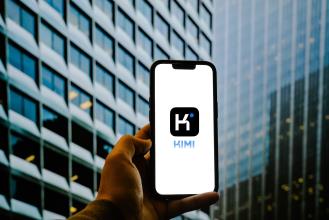Google Discover’s AI Summaries Are Squeezing Publisher Traffic 2025
- 10 November, 2025 / by Fosbite
What’s changing in Google Discover?
Google has started rolling out AI-generated summaries inside Discover — the personalized news feed in the Google app on iOS and Android. Instead of a single publisher headline, some cards now show multiple publisher logos with a short, AI-written overview that cites those sources. The app even warns users the summaries are generated with AI and "can make mistakes." That little caveat doesn’t change the fact that for many casual readers, the summary is enough.
Why publishers are worried
Publishers depend on referral traffic from Google Search and Discover. Honestly, I’ve seen this movie before: even a small reduction in clicks ripples through ad RPMs and subscription funnels. With these AI summaries (and the prior shift toward AI Overviews), users often get the answer without ever clicking — and that translates to fewer pageviews, fewer ad impressions, and fewer conversion opportunities.
- Less click-through traffic: Early signals show more queries end in zero clicks. That’s not theoretical — it’s cash flow.
- Revenue impact: Fewer visits = fewer ads shown and lower subscription conversions, especially for outlets that rely on broad discovery traffic.
- Loss of context and nuance: Condensed AI summaries can flatten complexity. Some stories lose the nuance that makes them worth reading in full.
How Google describes the rollout
A Google spokesperson confirmed this is a U.S. launch (not just a lab test). Initially the feature leans into lifestyle categories — sports, entertainment, trending topics — where quick summaries feel handy. Their framing is simple: help people decide which pages they want to visit. But there’s a tension here: convenience for readers versus economic signal for publishers.
What formats are appearing besides summaries?
Discover isn’t just showing single-line summaries. We’re seeing experiments: AI-generated bullet points under headlines, grouped story clusters, and cards that pull together multiple sources. A political event might be bundled with several takes; a feature piece might show bullets that strip the story down to key facts. That’s useful — until it replaces the incentive to click through.
Publishers themselves aren’t standing still. The Wall Street Journal, Bloomberg, USA Today, and newcomers like Particle are shipping AI summaries or reader experiences that let users ask follow-ups — but the key difference is those tools often steer people back to the source. That’s the playbook: use AI to amplify, not to disintermediate.
Data: how large is the traffic drop?
Market intelligence makes this feel real and measurable. Similarweb reported roughly a 15% year-over-year decline in worldwide search traffic as of June. Other trackers show the percentage of news searches with no click-through rose from about 56% in May 2024 to nearly 69% in May 2025. Organic visits to news sites dropped from a peak above 2.3 billion to under 1.7 billion. Those numbers aren’t subtle — they’re a punch to the top line.
What Google is offering publishers instead
Google has also pushed tools intended to help publishers monetize differently via Google Ad Manager — think Offerwall-style features: micropayments, surveys, newsletter promos, and rewarded ads. Useful? Yes. Sufficient? For many publishers, no — especially when the referral traffic that fuels growth has already evaporated. These are helpful levers, but they’re often after-the-fact.
Is there any hope for publishers?
Short answer: yes — but only if strategy shifts fast. You can’t simply wait for platform fixes. Here are practical, immediate steps editors and publishers can test this quarter:
- Prioritize unique, original reporting: Deep investigations, proprietary data, and exclusive interviews are harder for an AI summary to substitute. Exclusive beats aggregated every time.
- Design for direct engagement: Add lightweight hooks — one-click newsletter signups, embedded audio, or micro-interactives that reward clicking through.
- Leverage first-party data: Move toward authenticated experiences. Use first-party data strategies to segment readers, then monetize via subscriptions or targeted offers rather than pure programmatic ads.
- Experiment with AI on your terms: Ship your own AI summaries that intentionally link back to the full piece — and label them clearly. If you control the summary, you can nudge readers to the original story.
- Negotiate with platforms: Explore licensing and revenue-share deals, or API arrangements that preserve referral credit. Publishers should test commercial conversations now, not later.
A hypothetical example: one outlet’s quick pivot
Picture a mid-size local outlet that lost 30% of organic search referrals in three months. They didn’t whine — they reallocated. Weekly data-driven explainers were prioritized, a daily 90-second podcast launched, and a one-click newsletter sign-up was added to every article. Within two quarters, direct and newsletter-driven traffic climbed back enough to offset a meaningful slice of lost ad and subscription revenue. It’s not magic; it’s disciplined reorientation toward reader-first products.
How this affects readers
For readers, AI-generated news summaries can be handy — fast answers, tidy bullets. But the trade-off is a flattening of viewpoints and less curiosity-driven exploration. If you rely on Discover, expect more synthesized content and fewer incentives to click through to the original reporting. That harms discovery of long-form work and investigative pieces.
What regulators and industry groups are saying
Publishers and trade groups are pushing back. Concerns: fairness, attribution, and the economic harm when AI features draw heavily on copyrighted reporting without adequate compensation. There are questions about opt-outs and more transparent attribution. The policy conversation is active — and it may shape whether platforms have to pay or provide clearer linking terms.
Bottom line
Google Discover’s AI summaries are part of a broader shift toward AI-first interfaces that answer users without sending them to source sites. That creates immediate economic stress for publishers — but also an imperative: adapt. Survival won’t come from resisting AI; it will come from doubling down on unique reporting, building direct reader relationships, and using first-party data strategies to capture value. To be fair — and blunt — publishers that treat this as an opportunity to rework engagement and conversion will fare better than those that wait for the platforms to fix the problem.
Frequently asked follow-ups readers are searching for
- What are Google Discover AI summaries and how do they work?
- Are publishers losing traffic because of Google Discover?
- How much traffic did news sites lose to AI summaries in 2025?
- Can publishers opt out of being included in Discover AI summaries?
- How to turn Discover readers into paid subscribers?
- Which publishers are building their own AI summaries?
- Are there legal rules about using publishers' content in AI summaries?









